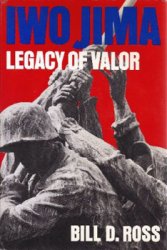When America’s war horse was harnessed, it gailoped through the Pacific at a thundering pace. Advances made in 1944 by the combined efforts of the Army, Navy and Marine Corps mimicked those of the Japanese three years before.
By now the US strength at sea was awesome. Since the outbreak of the war with Japan a further 21 aircraft carriers had come into service capable of holding a total of about 3,000 planes.
That was in addition to a splendid array of new battleships, transports, cruisers, destroyers and landing craft newly arrived and ready for action.
On the other hand, the Japanese had suffered severe losses at sea and were continuing to do so. Apart from naval conflicts, the Japanese ships had to contend with the numerous American submarines now patrolling the Pacific in force.
Tiny Japan, so dependent on the resources it imported from overseas, was unable to replenish the fleet, with much of its merchant fleet being sunk bringing home vital war production materials. By 1944 two thirds of the tanker fleet bringing oil to Japan from the South Pacific fields had been wrecked by the Allies.
While 40 per cent of the oil produced in those fields reached Japan in 1942, only 13.5 per cent was unloaded at Japanese ports in 1944 thanks to the efficiency of the submarines and fleet ships. Oil reserves were dwindling fast, threatening to grind the war effort to a halt. Hopelessly outnumbered, it seemed on paper that Japan’s navy was all but finished.




 World History
World History









